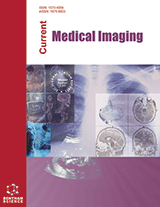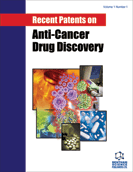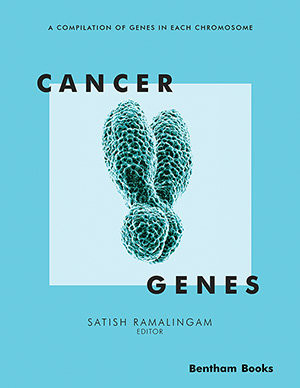
Abstract
Introduction: C-X-C Chemokine receptor type 4 (CXCR4) is often overexpressed or overactivated in different types and stages of cancer disease. Therefore, it is considered a promising target for imaging and early detection of primary tumors and metastasis. In the present research, a new cyclo-peptide radiolabelled with 99mTc, 99mTc-Cyclo [D-Phe-D-Tyr-Lys (HYNIC)- D-Arg-2-Nal-Gly-Lys(iPr)], was designed based on the parental LY251029 peptide, as a potential in vivo imaging agent of CXCR4-expressing tumors.
Methods: The radioligand was successfully prepared using the method of Fmoc solid-phase peptide synthesis and was evaluated in biological assessment. Molecular docking findings revealed high affinity (binding energy of -9.7 kcal/mol) and effective interaction of Cyclo [D-Phe- D-Tyr-Lys (HYNIC)-D-Arg-2-Nal-Gly-Lys(iPr)] in the binding pocket of CXCR4 receptor (PDB code: 3OE0) as well. Result: The synthesized peptide and its purity were assessed by both reversed-phase high-performance liquid chromatography (RP-HPLC) and mass spectroscopy. High stability (95%, n = 3) in human serum and favorable affinity (Kd = 28.70 ± 13.56 nM and Bmax = 1.896 ± 0.123 fmol/mg protein) in the B16-F10 cell line resulted. Biodistribution evaluation findings and planar image interpretation of mice both showed high affinity and selectivity of the radiotracer to the CXCR4 receptors.
Conclusion: Therefore, the findings indicate this designed radioligand could be used as a potential SPECT imaging agent in highly proliferated CXCR4 receptor tumors.
Keywords: SPECT imaging, C-X-C chemokine, cancer, Technetium 99m, HYNIC, AMD3100.
[http://dx.doi.org/10.4155/fmc-2020-0044]
[http://dx.doi.org/10.1038/35065016] [PMID: 11242036]
[http://dx.doi.org/10.1038/onc.2015.139] [PMID: 25961926]
[http://dx.doi.org/10.1007/s12149-018-1290-8] [PMID: 30105558]
[http://dx.doi.org/10.1016/j.bcp.2009.06.010] [PMID: 19540208]
[http://dx.doi.org/10.1159/000315736] [PMID: 20530974]
[http://dx.doi.org/10.1371/journal.pone.0034038] [PMID: 22485156]
[http://dx.doi.org/10.7150/thno.5376] [PMID: 23382786]
[http://dx.doi.org/10.1182/blood-2015-02-628677] [PMID: 26031918]
[http://dx.doi.org/10.7150/thno.4835] [PMID: 23382787]
[http://dx.doi.org/10.1016/j.bmc.2009.01.014] [PMID: 19188071]
[http://dx.doi.org/10.1021/mp200401p] [PMID: 22085282]
[http://dx.doi.org/10.1016/j.nucmedbio.2013.02.003] [PMID: 23522974]
[http://dx.doi.org/10.1016/j.bmc.2013.12.012] [PMID: 24365390]
[http://dx.doi.org/10.1007/s11307-016-1028-8] [PMID: 27896627]
[http://dx.doi.org/10.1158/0008-5472.CAN-09-4396] [PMID: 20460522]
[http://dx.doi.org/10.7150/thno.12303] [PMID: 26000059]
[http://dx.doi.org/10.7150/thno.11251] [PMID: 25825601]
[http://dx.doi.org/10.1021/ol800654n] [PMID: 18407647]
[http://dx.doi.org/10.1002/cmdc.201100320] [PMID: 21780290]
[http://dx.doi.org/10.1021/jm2009716] [PMID: 21905730]
[http://dx.doi.org/10.1186/s13550-016-0193-8] [PMID: 27112767]
[http://dx.doi.org/10.7150/thno.19119] [PMID: 28744319]
[http://dx.doi.org/10.1158/1078-0432.CCR-13-2686] [PMID: 24727324]
[http://dx.doi.org/10.1053/snuc.2001.26205] [PMID: 11710769]
[http://dx.doi.org/10.1016/j.bioorg.2020.104050] [PMID: 32663672]
[http://dx.doi.org/10.1126/science.1194396] [PMID: 20929726]
[http://dx.doi.org/10.1002/jcc.20084] [PMID: 15264254]
[PMID: 19499576]
[http://dx.doi.org/10.1111/j.1399-3011.1990.tb00939.x] [PMID: 2191922]
[PMID: 12414661]
[http://dx.doi.org/10.1038/sj.onc.1207097] [PMID: 14603250]
[http://dx.doi.org/10.1038/sj.onc.1208621] [PMID: 15806155]
[PMID: 11912162]
[http://dx.doi.org/10.1158/0008-5472.CAN-03-3398] [PMID: 15059909]
[http://dx.doi.org/10.1158/1078-0432.CCR-05-1940] [PMID: 16638848]
[PMID: 12702590]
[http://dx.doi.org/10.1073/pnas.2235846100] [PMID: 14595012]
[http://dx.doi.org/10.1007/s00262-004-0636-3] [PMID: 15592929]
[http://dx.doi.org/10.3390/cancers13133284] [PMID: 34209026]
[http://dx.doi.org/10.3390/pharmaceutics14030655]
[http://dx.doi.org/10.1016/j.nucmedbio.2012.10.004] [PMID: 23141548]
[http://dx.doi.org/10.1158/1535-7163.MCT-14-0850] [PMID: 25504752]
[http://dx.doi.org/10.1021/ci400037y] [PMID: 23577723]
[http://dx.doi.org/10.1016/j.jmgm.2012.06.010] [PMID: 23079643]
[http://dx.doi.org/10.1016/S0006-3495(03)74840-1] [PMID: 12524273]
[http://dx.doi.org/10.1039/c2cc31713c] [PMID: 22783549]
[http://dx.doi.org/10.1021/ol302592v] [PMID: 23121562]
[http://dx.doi.org/10.1016/S0969-8051(00)00200-6] [PMID: 11295426]
[http://dx.doi.org/10.1016/j.nucmedbio.2006.09.001] [PMID: 17127166]
[http://dx.doi.org/10.1039/b805110k] [PMID: 18493625]
[http://dx.doi.org/10.1016/j.ica.2010.01.009]
[http://dx.doi.org/10.1007/s10989-021-10264-2]
[http://dx.doi.org/10.1089/cbr.2017.2226] [PMID: 29389241]
[http://dx.doi.org/10.18632/oncotarget.19945] [PMID: 29088715]
[http://dx.doi.org/10.1089/scd.2011.0565] [PMID: 22121892]
[http://dx.doi.org/10.1021/acs.bioconjchem.7b00788] [PMID: 29320158]
 27
27 1
1
























